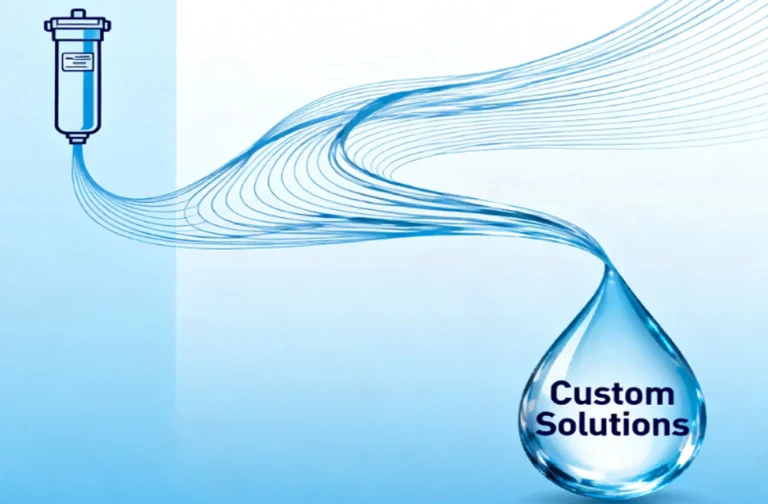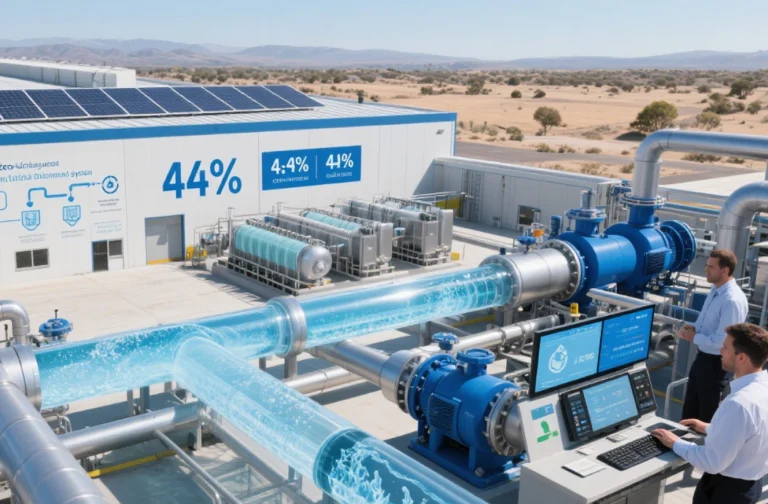BasideWT- Whole Home Water Filtration System & Replacement

Revolutionizing Reuse: Advanced Dual-Membrane Process Achieves 98% Water Recovery in Electronics Manufacturing
Subtitle: Semiconductor Giant Slashes Water Footprint and Operational Costs with Closed-Loop Water System Implementation
Publication Date: September 4, 2024
Keywords: Electronics wastewater treatment, high-purity water recycling, dual-membrane technology, closed-loop water system, ultrapure water production, water footprint reduction, semiconductor water reuse, industrial water conservation, PFAS removal
The Silicon Thirst: An Industry Paradox
The global electronics manufacturing industry faces a paradoxical challenge: while creating the world’s most advanced technology, it remains dependent on enormous quantities of extremely pure water. A typical semiconductor fabrication plant can consume 2-4 million gallons of water daily—enough to supply a small city. With manufacturing hubs often located in water-stressed regions and sustainability pressures mounting, the industry has reached an inflection point.
Traditional wastewater recycling approaches have proven inadequate for electronics manufacturers, who face unique contamination challenges including trace metals, fluorinated compounds (PFAS), and complex solvents. Conventional treatment methods often fail to remove these micro-contaminants to the parts-per-trillion levels required for process water reuse.
After three years of collaborative R&D with leading chip manufacturers, our water technologies division has successfully implemented and validated a novel Integrated Membrane Solution that achieves unprecedented recovery rates while meeting the extreme purity requirements of semiconductor production.
Technical Breakthrough: The Cascade Filtration Advantage
The breakthrough system installed at a major semiconductor fabrication plant in Asia combines multiple technologies in a carefully sequenced treatment train designed to address the specific contaminant profile of electronics wastewater.
1. Intelligent Contaminant-Specific Pretreatment
- Technical Specifics: The system employs a smart oxidation process that utilizes advanced ozone injection combined with targeted catalyst media to break down complex fluorinated compounds and organic solvents that resist conventional treatment
- Innovation: Real-time TOC monitoring triggers automatic adjustment of oxidation intensity, ensuring complete contaminant destruction without excessive energy use or byproduct formation
2. Selective Membrane Technology Stack
- Technical Architecture: The core treatment utilizes a staged membrane approach:
- Macro-filtration: Removes particulate matter and precipitated metals through automated backwash filtration
- Specialized Nanofiltration: A proprietary membrane formulation selectively removes divalent ions and larger organic molecules while allowing monovalent salts to pass through
- High-Efficiency Reverse Osmosis: A double-pass RO system with customized membrane materials achieves 99.7% salt rejection while operating at exceptionally high recovery rates
- Electrodeionization: Polishing step removes residual ions to ultrapure standards without chemical regeneration
- Performance Data: The integrated membrane stack demonstrates consistent contaminant removal to non-detect levels at parts-per-trillion sensitivity, exceeding semiconductor industry standards
3. Energy Recovery and System Intelligence
- Operational Innovation: The system incorporates isobaric energy recovery devices that reduce pumping energy requirements by 62% compared to conventional systems
- AI-Powered Optimization: Machine learning algorithms analyze real-time performance data from 147 sensor points to optimize chemical dosing, membrane flux rates, and cleaning cycles, adapting to changing wastewater characteristics
Quantifiable Results: Environmental and Economic Returns
After twelve months of continuous operation, the installation has delivered exceptional measurable outcomes:
Water Performance Metrics:
- Overall Water Recovery Rate: 98.2% of treated wastewater now reused in manufacturing processes
- Water Purity: Produced water consistently meets ASTM Type E-1 ultrapure water specifications
- Footprint Reduction: 75% smaller physical footprint compared to conventional treatment systems
Economic Impact Assessment:
- Annual Water Cost Reduction: $3.7 million savings in water procurement and disposal costs
- Energy Efficiency: 44% reduction in energy consumption per gallon produced compared to best available technology
- Chemical Usage: 68% reduction in chemical consumption for water treatment
- Maintenance Costs: 52% lower membrane replacement and maintenance expenses
Sustainability Achievements:
- Water Withdrawal Reduction: 890 million gallons annually from local watersheds
- Carbon Footprint: 2,100 metric tons CO2 equivalent reduction per year
- Zero Liquid Discharge: Achievement of operational ZLD without concentrate wastewater discharge
Industry Implications: Raising the Bar for Water Stewardship
This project represents a fundamental shift in how high-technology industries approach water management. The demonstrated ability to achieve near-total water recovery with reliability and economic viability sets a new benchmark for industrial water stewardship.
“Our collaboration has proven that water scarcity need not constrain technological advancement,” noted Dr. Elena Rodriguez, Chief Water Technology Officer. “This system demonstrates that with the right integrated approach, manufacturers can achieve both environmental leadership and economic advantage simultaneously.”
The success at this facility has prompted industry-wide reevaluation of water management strategies, with three additional major semiconductor manufacturers already embarking on similar implementations.
Future Vision: Water-Positive Manufacturing
This technological achievement represents more than just an incremental improvement—it points toward a future of water-positive industrial operations. The company is now developing next-generation systems that aim to achieve net-positive water impact through atmospheric water harvesting integrated with advanced recycling.
The convergence of water treatment technology, energy recovery, and artificial intelligence creates unprecedented opportunities for industrial operations to become environmental restoration partners rather than resource consumers.
Technical teams from electronics manufacturers interested in implementation feasibility studies are invited to contact our industrial water solutions group for comprehensive site assessments and ROI projections tailored to specific operational conditions and local water challenges.




